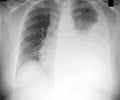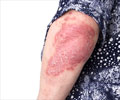The guidelines for hospital personnel to treat patients with drug-resistant tuberculosis helps reduce transmission of deadly organisms within the hospital.

‘The recommendations for duration of contact precautions, such as gowns, gloves, and masks, are specific to key multi-drug resistant organisms.’





The framework addresses how long hospital staff should use these safety protocols to reduce the spread of potentially deadly organisms within the hospital, in most cases ranging from one to three negative cultures prior to discontinuation. The guidance also outlines the use of molecular testing that is guiding these care decisions. "Because of the virulent nature of multi-drug resistant infections and C. difficile infections, hospitals should consider establishing policies on the duration of contact precautions to safely care for patients and prevent spread of these bacteria," said David Banach, MD, MPH, an author of the study, and hospital epidemiologist at University of Connecticut Health Center.
The SHEA Guidelines Committee, comprised of experts in infection control and prevention, developed the recommendations based on available evidence, theoretical rationale, practical considerations, a survey of SHEA members, author opinion, and consideration of potential harm, where applicable.
The recommendations for duration of contact precautions, such as gowns, gloves, and masks, are specific to key multi-drug resistant organisms, such as MRSA, Vancomycin-resistant enterococci (VRE), and Carbapenem-resistant Enterobacteriaceae (CRE), as well as Clostridium difficile. The guidance was endorsed by the Association for Professionals in Infection Control and Epidemiology (APIC), the Society of Hospital Medicine (SHM), and the Association of Medical Microbiology and Infectious Disease Canada (AMMI Canada).
According to the guidance document, hospital personnel should weigh how much time has elapsed since the last positive culture to determine if contact transmission is likely. The guidance also advises on patient characteristics that could determine the duration of care. For Clostridium difficile infections (CDIs) specifically, the recommendation is to continue contact precautions for at least 48 hours after the resolution of diarrhea and consider extending if CDI rates are elevated despite infection prevention and control measures.
Advertisement
"The duration of contact precautions can have a significant impact on the health of the patient, the hospital, and the community," said Gonzolo Bearman, MD, MPH, an author of the study, and chairman of the Division of Infectious Diseases at Virginia Commonwealth University. "This guidance is a starting point, however stronger research is needed to evaluate and optimize the use."
Advertisement
Source-Eurekalert















